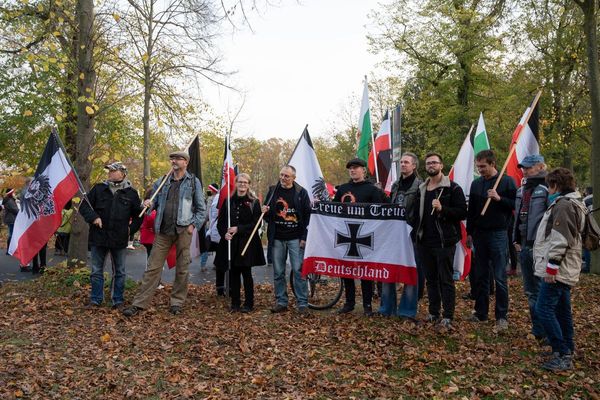
Sri Lankans are facing huge distress and pain, prompting many to take the risky trip to Australia in search of a better life.
But the spike in asylum seekers is not because of a belief that Australian people have elected a kinder government (Labor is just as committed to boat turnbacks as the Coalition). It’s because the nation of 22 million people has been plunged into its worst financial crisis in decades.
Perhaps some are clinging to the hope that a new government will mean they will be allowed in. But it’s the economic tragedy tearing the South Asian country apart that is driving people to leave in the first place.
Like many Asian democracies, Sri Lanka is saddled with political family dynasties. This has culminated with two Rajapaksa brothers, Gotabaya and Mahinda, serving as president and prime minister concurrently from 2019 until May 22, 2022, when Mahinda was replaced by Ranil Wickremesinghe. During their previous rule, before losing power from 2015-2019, there were four brothers in senior positions, including Mahinda as president from 2005-2015.
The Rajapaksas have compounded Sri Lanka’s economic crisis with the bizarre and ill-fated decision to go “green” by banning chemical fertilisers overnight in April 2021. This decimated the country’s agriculture industry, including the critical rice crop, turning Sri Lanka from exporter to significant importer within a year and collapsing its tea industry, the country’s major export.
“Sri Lanka has experienced macroeconomic instability, economic stagnation and a volatile business environment for decades. It has also been suffering from a twin deficit problem — a balance of payments, foreign exchange and fiscal deficit — due to years of economic mismanagement and corruption,” wrote Chulanee Attanayake, a research fellow at the Institute of South Asian Studies, National University of Singapore.
The pandemic has removed another key source of foreign reserves in the shape of remittances from the more than 1 million nations who work mainly in the Gulf states. Remittances in Sri Lanka averaged US$508 million a month between 2009 until 2022, hitting a high of US$813 million in December 2020, then plugging to a record low of US$204.90 million in February 2022.
These twin shocks have left the nation unable to service billions of dollars in foreign debt to pay for critical fuel, medicine and food imports. It is seeking a bailout from the International Monetary Fund, but that won’t happen until at least August. Soaring food prices and field shortages are the basis for further protests that could sour IMF talks.
The crisis is pushing Sri Lankans to the brink, with many being forced to leave families and homes to seek safe havens abroad. The journey from Sri Lanka to Christmas Island takes about 21 days in a fishing boat.
More than 300 Sri Lankans have tried to get to Australia in the past few weeks, and the ABC has shown footage of fishing trawlers packed with asylum seekers in choppy waters being caught by the Sri Lankan Navy — often using boats supplied by Australia under the long-running program Operation Sovereign Borders. The fact, conveniently ignored by the Coalition, is that the “boats” — people fleeing for their lives — never stopped coming.
Between 2013 and 2021, 873 people seeking asylum on 38 vessels have been returned to their country of departure, either with a very rudimentary assessment process or no refugee status assessment at all. This number includes 124 children, the Refugee Council of Australia noted in a November 2021 report.
The recent economic crisis has only sharpened Sri Lanka’s position in the vortex of geopolitical competition between China, where it is a key part of its so-called string and pearls strategy: friendly ports between China, the Middle East, Europe and the emerging Quadrilateral Alliance comprising the US, Japan, Australia and its close neighbour India.
In recent decades, part of the Rajapaksas’ mismanagement has been turning towards China for massive loans, including for questionable “field of dreams” infrastructure projects highlighted by the Hambantota port and airport, originally designed as a rival to Dubai but whose viability is under question; recently, a protester set fire there to the Rajapaksa family home. India and its allies are moving to try and leverage the Chinese failures to its advantage.
Mahinda Rajapaksa has been sacked, and pro-government agitators were behind the May violence, but his brother Gotabaya hangs on as president for now.
There is also a serious conversation that the new Labor government needs to have with the crossbench and the Australian people about how to have a more humane refugee policy. (The Refugee Council says the current policy of boat turnbacks is akin to saving someone from electrocution by strangling them. But that is for another day, hopefully in the not-too-distant future, once Labor has, with any luck, established a good working relationship with the crossbench and the trust of the public.
And let’s not forget we have yet another humanitarian crisis at our doorstep — the tragically under-reported human rights abuses in Myanmar.
But at present, Sri Lanka is looming as an immediate and thorny problem for the Albanese government, one that crosses the populist issues of immigration with a rising China. Finding a solution could lead to both a political and humanitarian win.







